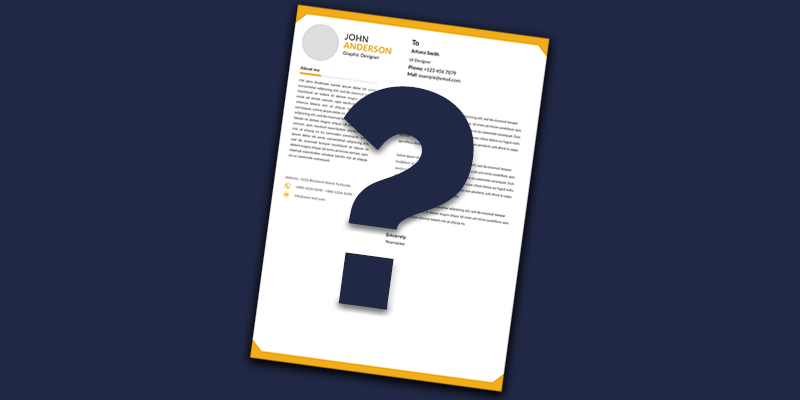
Are Cover Letters Necessary for Job Applications?
In the days of online portfolios and LinkedIn, though, is a cover letter really necessary?
While you may think that you’re better off spending your time networking and building your brand (and you should do these things, too), including a cover letter with most job application is still an essential part of your job search and should be included with most applications (though there are a few exceptions).
Why You Should Include a Cover Letter
Including a customized cover letter every time you apply for a job is well worth the time you spend on it.
Cover letters give you extra “real estate” to sell you and your experience to the hiring manager. That one extra page is the first indication that you are truly interested in the role, and it’s your chance to shine. Including a cover letter helps your application:
- Paint a clear picture for the hiring manager of why they should interview you.
- Stand out from other applicants by using concrete examples to explain how your skills and experience make you a great fit for the role.
- Fill in the blanks with the details you can’t put on your resume, such as why you’re changing careers or how you’re inspired by the mission of a company.
The cover letter is also your chance to inject a little personality into your application in ways that your resume can’t. For example, you can explain why you feel passionately about your profession, how you got started in your career, or what it is about the company and position that excites you.
Is a Cover Letter Ever Unnecessary?
In rare cases, a cover letter won’t be necessary. However, that’s only when a job posting specifically states that you should not include a cover letter.
When that’s the case, even if you want to, don’t include a cover letter. While it means you won’t be able to give your application more depth, not following the instructions isn’t a good first impression.
Special Cover Letter Circumstances
That said, there may be times you run across odd circumstances that make you wonder if the employer does or doesn’t want a cover letter. Pro tip: include it anyway! If nothing else, you’re giving yourself one more opportunity to stand out to the company—in a good way!
Here’s how to include a cover letter in special circumstances.
When a Cover Letter is Optional
Sometimes job postings indicate that cover letters are optional. Or there’s a field in the online application that says something like, “Include anything else you want, like a cover letter.”
When a cover letter is optional, take the option. It’s one more opportunity for you to sell yourself to the hiring manager and paint a compelling portrait of how you’ll fit in the role and at the company.
When There’s No Place for a Cover Letter
Most companies use an applicant tracking system (ATS) to manage the recruiting process. One of the many pros of ATSs for companies is that these programs can be configured any way the company specifies. And, as you’re filling out the required fields, you may not find a required field for “cover letter.” In fact, you may not see any place to add one at all!
When that happens, though, don’t skip the cover letter. You should still include one as part of the application. And to do that, you will add the cover letter to the same file as your resume, but you’ll make the cover letter the last page of the file.
It may sound counterintuitive. After all, starting with the cover letter sounds like the right way to proceed. However, when it comes to ATSs, putting your resume first, then the cover letter, is the correct order.
The important thing to know about ATSs is that they generally give the first page of the file the most weight. It’s programmed to look for recent experiences (by parsing dates) and for relevant keywords, among other things. Generally, you don’t include dates on a cover letter, and while you can (and should) include keywords where applicable, you can’t fit in nearly as many in a cover letter as you can in a resume without resorting to keyword stuffing.
Including a cover letter is an essential part of your application, even when you’re applying through an ATS. By placing the letter last, you’re giving the ATS a chance to review and score your resume first, which is exactly what you want. However, including a cover letter also gives the human recruiter an opportunity to learn more about you.
Still Necessary and Relevant
Cover letters are still a necessary part of most job applications, and can help you land your perfect position. Use the opportunity to pitch yourself as the right match for the role with a customized cover letter every time.
Want some help creating a custom cover letter? Schedule a session with one of our coaches. They’ve got years of experience helping job seekers craft a compelling and winning cover letter that gets results.
Learn About Our Career Coaching Services>
By Rachel Pelta | Categories: Work Remotely



